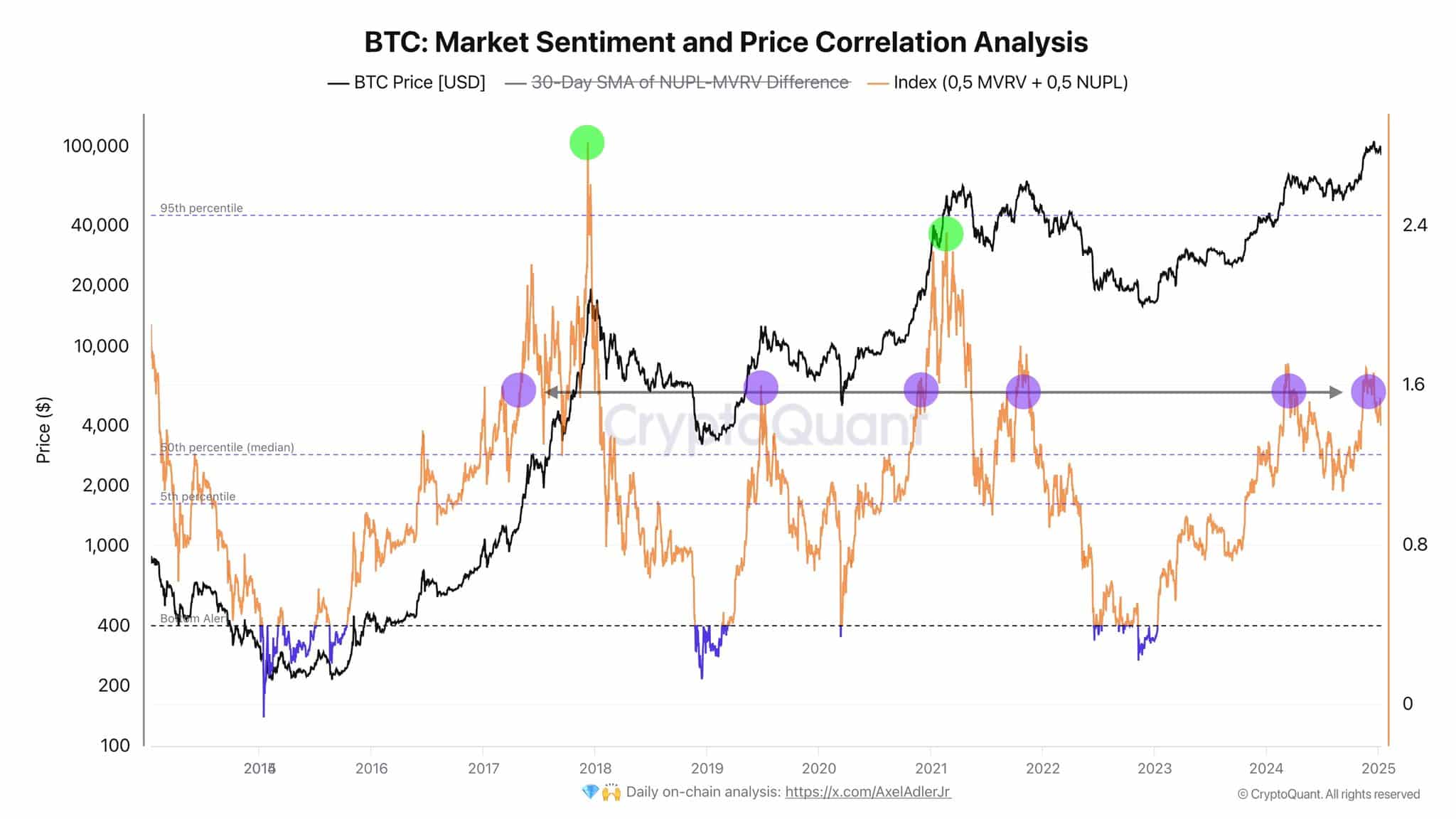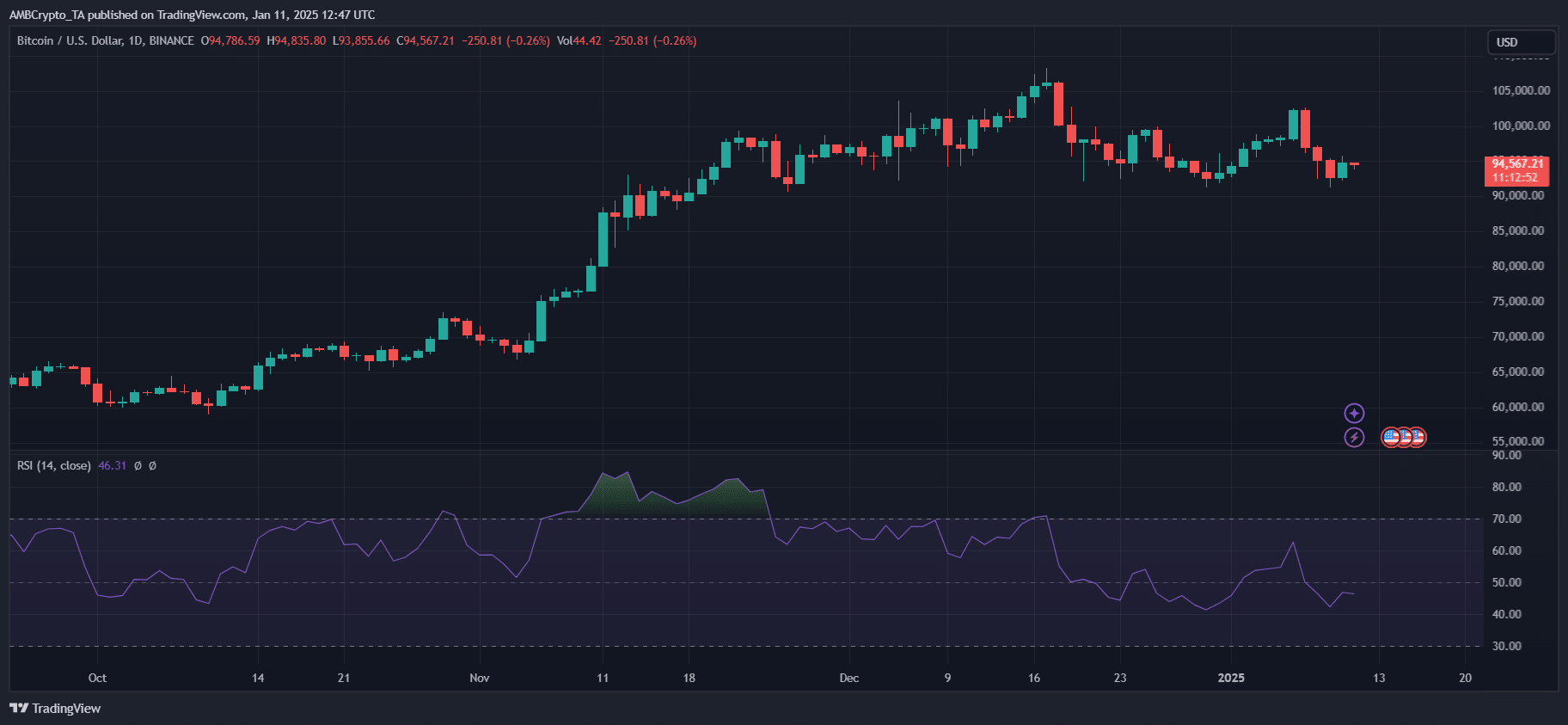-
As the dawn of 2025 unfolds, the cryptocurrency space buzzes with enthusiasm, though caution prevails amidst indications of potential market corrections.
-
Investor sentiment is at an intriguing crossroads, marked by a fear and greed index of 69 and historical patterns that highlight correction risks.
-
According to COINOTAG analysts, “A fear and greed index above 95 often foreshadows a market downturn, revealing unsustainable enthusiasm.”
Amid rising optimism as 2025 begins, crypto investors must remain vigilant, watching key indicators for potential market corrections and shifts.
Understanding Investor Sentiment and Market Dynamics
The cryptocurrency market is often subject to the whims of investor sentiment. As we delve into the new year, the current fear and greed index reading of 69 illustrates a significant level of optimism among traders, albeit not at euphoric levels. Historically, such an index signals caution, reminding us of past market corrections that followed periods of excessive optimism.
Potential Overheating Signals
When the fear and greed index reaches 95, traders have historically entered a danger zone, where speculation reigns and market corrections typically follow. Analysts stress that when optimism peaks without fundamental backing, reality often brings the market back down. Understanding these dynamics is key in making informed trading decisions.
Key Indicators to Monitor for Market Corrections
With market conditions evolving rapidly, experts highlight several critical indicators that may forecast potential corrections.
Long-Term Holder Selling Patterns
Long-term holders (LTHs), who have weathered volatility over extended periods, may begin to sell when they sense a peak. Recent upticks in profit-taking among LTHs are reminiscent of trends observed before the 2017 and 2021 bull runs. A significant increase in these sales could foreshadow a broader market pullback, undermining investor confidence.
ETFs and Institutional Sentiment
The recent shifts in Bitcoin ETF outflows signal a cooling interest from institutional investors, a critical factor influencing market dynamics. After a record inflow period in late 2024, the modest outflows in early January raise concerns regarding institutional commitment to Bitcoin, often leading to diminished market activity.
MicroStrategy’s Influence on Institutional Investment
MicroStrategy (MSTR) serves as an indicator of institutional sentiment regarding Bitcoin. A decline in MSTR shares, especially after robust demand in previous quarters, could signal waning interest in Bitcoin from large investors. Historically, such declines have coincided with downturns in the crypto market.
Bitcoin’s Price Action and Historical Context

Source: X
As market analysts review historical data, Bitcoin’s current positioning reveals patterns consistent with past cycles. The NUPL-MVRV index is nearing territory that has historically indicated market peaks. Such metrics have historically pointed to heightened risk, where corrections often follow periods of inflated optimism.

Source: TradingView
Currently, Bitcoin’s RSI has decreased to 46 after an overbought December, hinting at potential consolidation or corrective action. The price hovering near $95,000 marks a significant resistance level, which has previously curtailed momentum. If the market fails to maintain upward traction, a retracement toward the $88,000-$90,000 support levels may ensue, reflecting profit-taking trends and a reduction in ETF inflows.
Conclusion
The year ahead shows promise for cryptocurrencies, yet the emergence of early warning signals necessitates thoughtful engagement from investors. Awareness of the key indicators and historical patterns will be crucial in navigating the impending market landscape, ensuring decisions are based on comprehensive analysis rather than fleeting sentiment.
